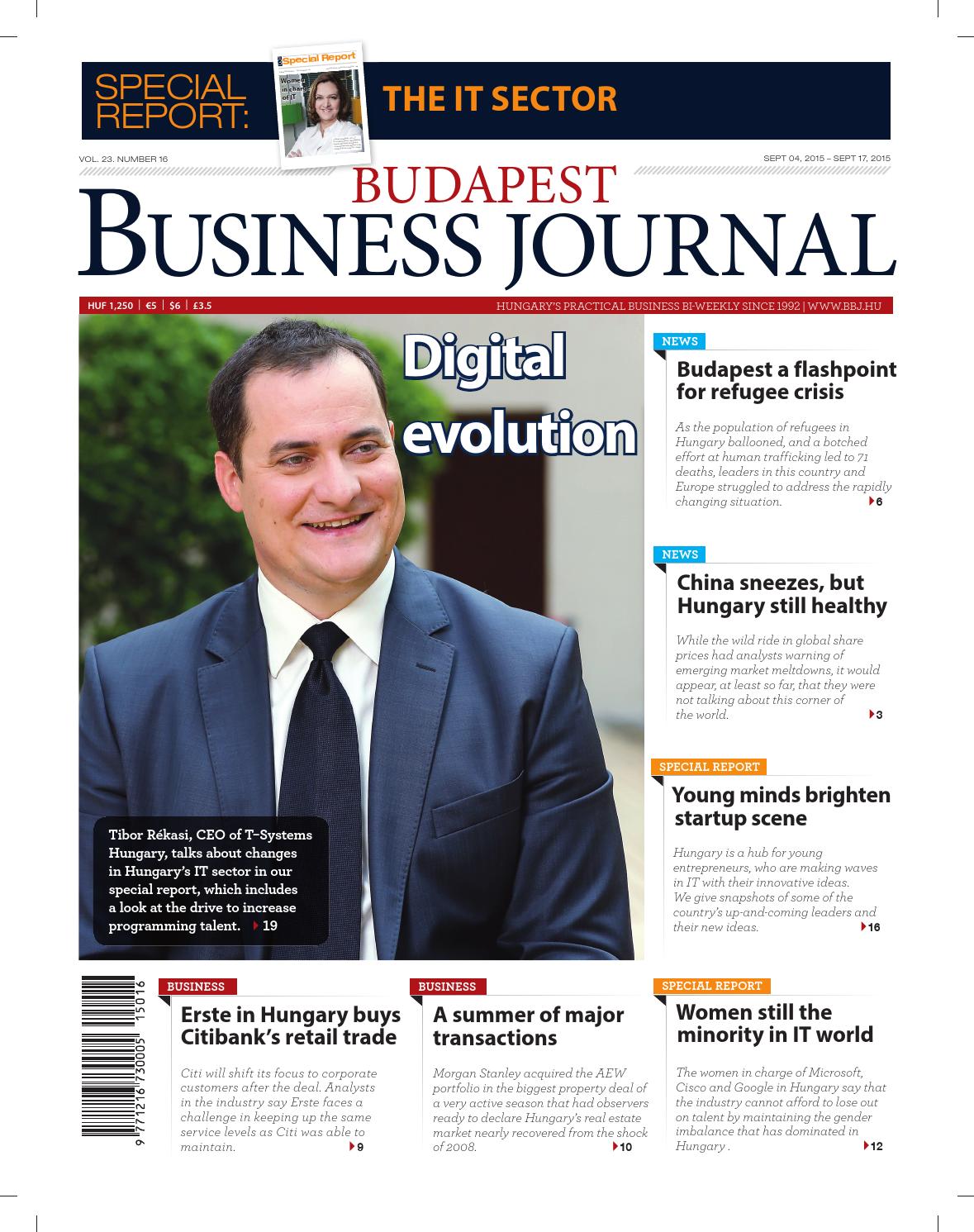Hungarian Banks Embrace Digital Race for Customers
- 4 Apr 2019 9:41 AM
- Budapest Business Journal

A few years ago, industry insiders seemed wary about the technological capabilities of the banking sector – not just in Hungary, but globally too – at an international banking summit hosted in Budapest.
Professionals had an eye on PayPal’s online dashboard, comparing its user-friendliness and swift nature to sluggish online banking solutions from traditional banks.
Today, the threat is even graver; tech startups with the potential to grow into tech unicorns, such as U.K. financial technology company Revolut, are ready to offer a mobile application-based banking experience, without the need of operating brick and mortar branches.
A user can open a bank account in ten minutes, including the application for an embossed bank card, that arrives by post in less than a business week. Through the app, users have full control over their accounts, at the flick of a finger.
Banks, internationally and in Hungary, need to keep up with the latest technological advancements.
“To enhance our agility and our customers’ satisfaction, MKB started its digitalization strategy four years ago.“
“Since then, we have replaced our core system, set up our innovation lab (MKB FinTechLab) and introduced new digital solutions for our customers (e.g. online bank account opening, paperless contracting for new accounts).”
MKB is quick to add that it sees the current technological progress as an array of possibilities, rather than threats.
The initial days of clumsy online banking solutions that were heavily internet browser dependent, often bringing more pain than merit, appear to be over. Banks in Hungary now offer mobile banking applications, and user numbers are growing gradually.
Native App
“UniCredit Bank Hungary launched its native mobile app in 2015 following a successful ‘Family and Friends’ internal testing period on iOS and Android platforms.
By the end of 2018, our bank has reached 120,000 contracted clients just in the private individual segment. The popularity of our mobile application is clearly shown by two figures: more than a half of our contracted clients are active on a monthly basis, while on third of our active client base is active on mobile.”
But this tendency of people turning to technology does not mean physical branches have becomes obsolete.
“Our experience at CIB Bank is that branches are increasingly becoming locations for advisory services, while more and more financial transactions are diverted into digital channels, although customers still like to visit branches on business that they could otherwise handle online, as they prefer professional support and help from our colleagues,” the Hungarian subsidiary of Intesa Sanpaolo explains.
“Employees working in branches therefore also have an important role in educating our customers: in many cases, they help customers try out some unique features available in our mobile app, such as applying for a personal loan with disbursement available as quickly as in seven minutes,” CIB adds.
Beyond going online, Budapest Bank says it puts a particular emphasis on the user experience. The bank launched its online app in 2017 and says it garnered such good ratings that it made the solution the second best banking app for both iOS and Android systems.
“Last year we introduced two new services: we launched a contactless mobile payment service (available through our mobile banking app), and we were the first bank in the country to introduce the payment of yellow and white postal checks by scanning the QR code.
New functions have already been introduced to the app this year, and more are expected in the following months,” Budapest Bank adds.
Digital Transformation
Keeping up with the pace of innovation, OTP Bank has launched a comprehensive Digital Transformation Program for a seamless transition to digitalized services, as well as the simplification of processes.
“Over the past four years, OTP Bank has completed dozens of digital projects, including a revamp of its mobile banking offering and the introduction of online sales of cash loans, which now account for approximately 20% of new loan production.
Today, more than one million Hungarian clients bank online and more than 400,000 use mobile banking,” the largest Hungarian-owned lender says.
While Hungarians do appear to be tech-savvy, the market is far from black and white, and sometimes it is difficult to see trends.
“Hungarians are sometimes early adopters when we talk about technology. For instance, contactless bank cards swiftly became popular among users, but we also have to note that the amount of physical cash is at a record level of more than HUF 6 trillion, mostly held by households, according to the National Bank of Hungary.
This is why it is difficult to predict the adoption rate of FinTech solutions [in Hungary],” MKB Bank explains.
User-friendly digital solutions make the life of clients more comfortable. All the banks agree on the fact that the needs of clients must be the primary focus of banks, whether the interface is digital or brick-and-mortar.
“Based on the complexity of the challenge and the personality of the customer, not each of these needs is to be solved in the digital space. Although people don’t like waiting in long lines to be served, there are some services, especially complex advisory services where the customers expect personal assistance,” MKB Bank points out.
OTP clearly agrees: “It is also important to stress, that the group has no plans to abandon its physical branch network, in Hungary or elsewhere. The reason for this is that personal contact with clients is still of crucial importance and the professionally well-prepared advisory work of our employees is in great demand amongst our clients,” it says.

























LATEST NEWS IN current affairs